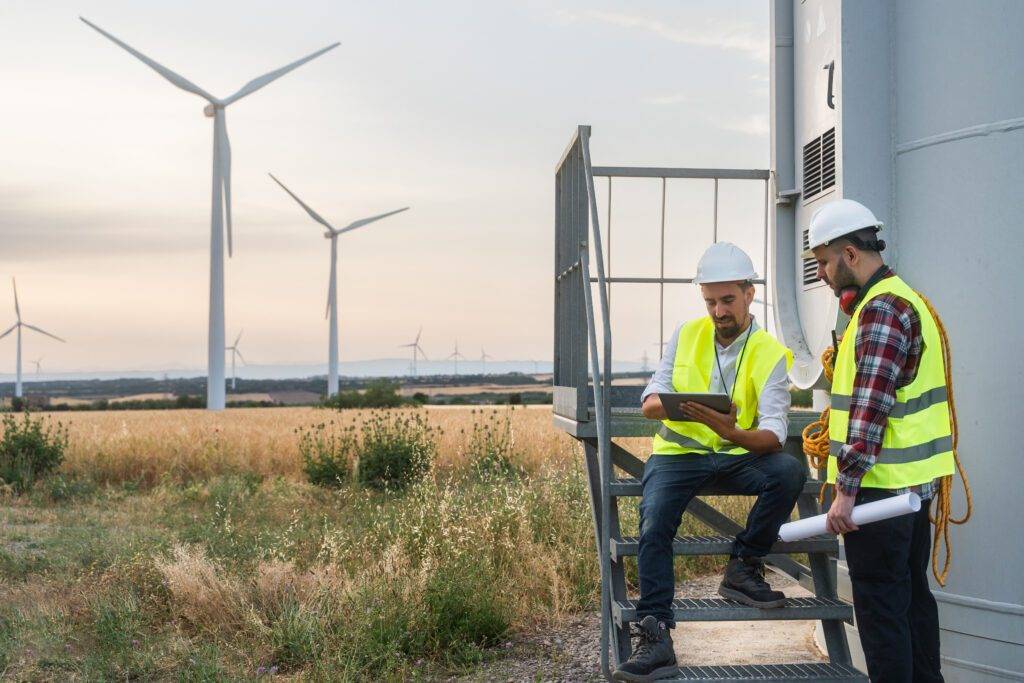How much clean energy does a wind farm produce?
 Wind farm
Wind farm
Nowadays, the kinetic energy and the power of natural air flows, which we call wind, are used on a massive scale to generate electricity. A well-located onshore wind farm generates tens of megawatts of electricity, and the electricity generated by the wind turbine is one of the most cost-effective, clean and easily accessible sources of energy in the world. Are you wondering how much electricity a wind farm can produce? In the following article you will find out how much energy can be produced thanks to the power of the wind.
What determines how much electricity a wind turbine produces?
How much energy a single wind turbine can produce depends primarily on its size and the speed of the wind flowing through the rotor blades. These two aspects have a decisive impact on the amount of electricity produced. For this reason, over the past decade, wind turbines have become taller as this design has allowed for longer blades. Secondly, there is an opportunity to take advantage of the better wind resources that are available at higher altitudes.
It should also be noted that each type of wind turbine is capable of generating maximum electricity within certain wind speeds. Typically, these are speeds of 45 to 90 kilometers per hour. However, if the wind is blowing less, electricity production tends to drop at an exponential rate rather than stop completely. For example, the amount of energy produced will be reduced by about eight times if the wind speed is halved. On the other hand, if the wind is too strong, the wind turbine will shut down automatically to prevent damage.
Energy production from a wind farm
It should be noted that the energy from a wind farm is the result of the use of wind turbines that are built both offshore and onshore. A single, modern offshore wind turbine can generate up to 8 megawatts (MW) of energy. By contrast, most onshore wind turbines have a capacity of 2-3 megawatts (MW). Thus, it can produce more than 6 million kilowatt-hours (kWh) of electricity per year. This is enough to meet the electricity needs of about 1,500 average households.
As a curiosity, it should be noted that at the end of 2022, the largest, prototype wind turbine in the world was launched in Denmark. It is to generate as much as 15 MW and should generate nearly 80 GWh of electricity per year. This corresponds to the demand generated by approximately 20 000 European households. However, looking at the construction of wind farms from an ecological perspective, a wind turbine with a capacity of about 1 MW can generate enough clean energy for about 300 houses per year. This is undoubtedly a great result.

Wind and energy production from a wind turbine
However, it should be remembered that energy from a wind farm is only produced when the wind blows. And each wind turbine produces more if the wind blows faster. All of this means that a wind turbine’s ability to generate the maximum possible amount of energy depends on the wind.
Wind farms are therefore carefully planned to ensure that they are located in locations with reliable wind power all year round. They are usually located on top of a hill or rise with lots of open space around. They are also located on the coasts. Therefore, many wind farms in Poland are located in the north of the country.
The largest wind farms in Poland
New and larger wind farms are still being built in Poland. Of the completed investments, the three largest ones are listed below:
- Banie wind farm — which consists of 106 turbines and has a capacity of 243 MW.
- Potęgowo wind farm — consisting of 81 turbines with a total capacity of 219 MW.
- Margonin wind farm — it has 60 windmills with a total capacity of 120 MW.
How much electricity comes from wind power plants in Poland?
According to data published by the Central Statistical Office at the end of 2022, in Poland in 2021 wind energy accounted for 10.9% of energy produced from Renewable Energy Sources (RES). The installed capacity of wind farms in our country is over 7.8 GW. In addition, wind farms accounted for 13.4% of the total installed capacity (RES and conventional energy).